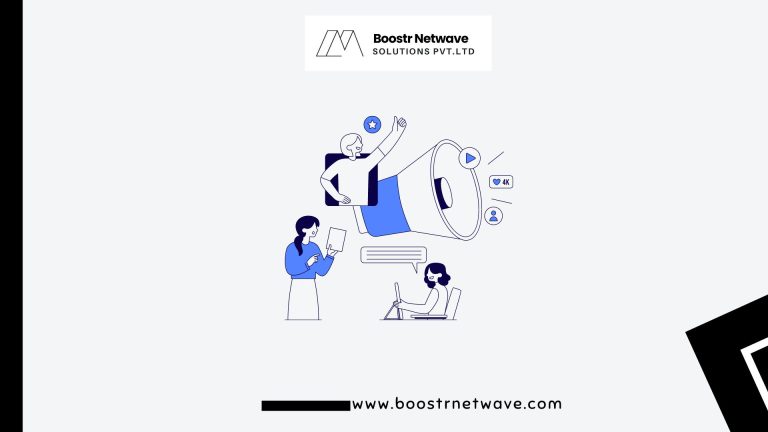In the ever-evolving landscape of marketing, one strategy stands out for its remarkable effectiveness – Account-Based Marketing (ABM). It’s not just a buzzword; it’s a game-changer for businesses aiming to maximize their marketing efforts. In this article, we’ll explore the diverse Benefits of Account-Based Marketing and why it’s become a go-to strategy for many successful companies.
Benefits of Account-Based Marketing
Account-Based Marketing, or ABM, is a personalized approach to marketing where efforts are concentrated on specific high-value accounts. It’s a strategy that prioritizes quality over quantity, focusing on nurturing and engaging potential clients in a more profound way. The benefits of adopting ABM into your marketing arsenal are manifold.
1. Precision Targeting
Account-Based Marketing (ABM) is all about precision targeting. Instead of casting a wide net and hoping to catch leads, ABM identifies and focuses on high-value accounts that are most likely to convert. This laser-focused approach is akin to a sniper’s precision rather than the scattergun approach of traditional marketing.
By leveraging data-driven insights, you can pinpoint the accounts that align with your ideal customer profile. This involves not only demographic data but also behavioral data, such as their online engagement and purchase history. With this information, you can tailor your marketing efforts to resonate deeply with these prospects.
ABM’s precision targeting ensures that your resources are utilized efficiently. You’re not wasting time and money on audiences that have no interest in your products or services. Instead, you’re engaging with those who are genuinely interested, increasing your chances of conversion.
2. Enhanced Personalization
Personalization is a cornerstone of effective marketing, and ABM takes personalization to new heights. When you engage with high-value accounts, you’re not just sending generic messages; you’re crafting personalized experiences.
Imagine receiving a marketing message that feels like it was created just for you, addressing your specific pain points and needs. That’s the power of ABM. It allows you to tailor your content, messaging, and even the timing of your outreach to suit the preferences of each account.
To achieve this level of personalization, you need to deeply understand your target accounts. What are their challenges? What are their goals? What keeps them up at night? Armed with this knowledge, you can create content and offers that resonate on a profound level.
3. Improved ROI
Return on investment (ROI) is a critical metric for any marketing strategy, and ABM excels in this regard. Because ABM is highly targeted, you’re not squandering resources on fruitless endeavors. Instead, your marketing dollars are concentrated where they matter most.
The process of identifying high-value accounts and customizing your approach may seem resource-intensive initially, but the payoff is substantial. By focusing on accounts with a higher propensity to convert, your ROI naturally climbs. You’re not just capturing leads; you’re capturing leads that are more likely to become long-term, high-value clients.
Furthermore, the data-driven nature of ABM allows you to continually optimize your campaigns. As you gather insights from your interactions, you can fine-tune your strategy, further enhancing your ROI.
4. Stronger Customer Relationships
In the world of business, relationships matter immensely. ABM recognizes this and places a strong emphasis on relationship building. When you concentrate your efforts on a select group of high-value accounts, you’re not just looking for one-time transactions; you’re aiming for long-term partnerships.
This approach fosters trust and loyalty. As you consistently engage with these accounts in a personalized and meaningful way, you demonstrate your commitment to their success. This, in turn, leads to stronger and more enduring customer relationships.
In the long run, these relationships often translate into repeat business, referrals, and even advocacy. Satisfied clients who feel truly valued by your company are more likely to sing your praises to others in their industry, expanding your reach through word-of-mouth.
5. Alignment of Sales and Marketing
One of the perennial challenges in business is the alignment of sales and marketing teams. ABM offers a solution to this age-old problem. When you adopt ABM, both departments have a shared goal – targeting and nurturing high-value accounts.
This alignment leads to improved communication and collaboration between the two teams. Sales teams benefit from marketing’s insights into account behavior and preferences, enabling them to have more meaningful conversations with potential clients. On the flip side, marketing teams benefit from sales’ frontline experience, gaining valuable feedback to refine their strategies.
The result is a harmonious and synergistic relationship between sales and marketing, leading to increased revenue. It’s a win-win scenario where both teams work cohesively toward a common objective.
6. Increased Conversion Rates
In traditional marketing, conversion rates can be underwhelming. This is often because the marketing messages are generic and don’t resonate with the audience. ABM changes this dynamic by delivering highly relevant and tailored content to each account.
When potential clients receive content that directly addresses their pain points and needs, they’re more inclined to take action. This could be signing up for a webinar, requesting a demo, or making a purchase. The result is a substantial boost in conversion rates.
Additionally, because ABM focuses on building relationships, the conversions achieved through this strategy are often of higher quality. These leads are not just one-time buyers but have the potential to become loyal, long-term customers.
7. Better Insights
Data is everything in modern marketing, and ABM provides an abundance of valuable insights. As you engage with high-value accounts, you gather data on their interactions, preferences, and behavior.
This data is a goldmine for refining your strategies. It allows you to see what’s working and what’s not, enabling data-driven decision-making. You can adjust your messaging, content, and timing based on these insights, continually optimizing your campaigns for better results.
Moreover, these insights extend beyond individual accounts. They can also reveal broader trends and patterns in your target market, guiding your overall marketing strategy.
8. Competitive Advantage
In a crowded marketplace, standing out is a challenge. ABM gives you a competitive advantage by demonstrating that you truly understand your prospects’ needs.
When a potential client receives personalized and relevant content from you, they’re more likely to choose your products or services over competitors. ABM showcases your commitment to their success, setting you apart from companies that rely on generic marketing tactics.
This advantage becomes even more pronounced in industries where competition is fierce. In such cases, ABM can be a game-changer that helps you win market share.
9. Scalability
While ABM is highly personalized, it’s also scalable. You can expand your efforts as your business grows, targeting more accounts without losing the personal touch.
This scalability is a significant benefit, particularly for companies with ambitious growth plans. It means that as you acquire more resources and personnel, you can extend the benefits of ABM to a larger pool of high-value accounts. Your marketing strategy can evolve with your business, ensuring that it remains effective as you continue to expand your reach.
In essence, ABM grows with you, adapting to the changing needs of your business and your clients. It’s a strategy that can be customized to fit your unique circumstances, whether you’re a startup or a Big corporation.
Conclusion
In conclusion, Account-Based Marketing offers a major of benefits for businesses willing to embrace a more personalized approach. By aligning marketing and sales efforts, leveraging data, and delivering tailored content, organizations can unlock the full potential of ABM and thrive in the competitive digital landscape.
FAQs (Frequently Asked Questions)
Absolutely! ABM is highly adaptable and can be tailored to suit the needs and budgets of small businesses.
The timeline for seeing positive results with ABM can vary, but many businesses start experiencing significant benefits within a few months of implementation.
ABM can be effective across various industries, but it’s especially advantageous for B2B companies with a narrowly defined target audience.
No, ABM complements traditional marketing efforts and can be seamlessly integrated into your overall marketing strategy.
Data is the lifeblood of ABM. Accurate and up-to-date data is crucial for identifying and effectively targeting the right accounts.
Also Read:- 14 Innovative Digital Marketing Strategies For B2b Saas Businesses. Also Read:- Why Does Digital Marketing Focus on Reaching Potential Customers? Also Read:- 10 Basic Technical SEO Checklist For Website. Also Read:- What Are The Benefits Of Content Syndication? Also Read:- Google Ads Mistakes That Digital Marketers Are Making.








